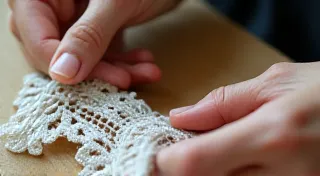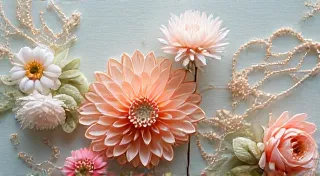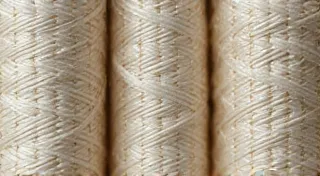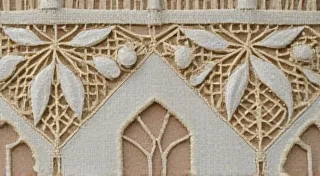The Role of Bobbin Lace in Victorian Fashion
The Victorian era (1837-1901) was a golden age for lace, and bobbin lace held a particularly prominent position. More than just a decorative element, bobbin lace became deeply intertwined with Victorian fashion, social status, and even home aesthetics. Understanding this context is crucial for anyone identifying and appreciating antique bobbin lace.
A Status Symbol and a Craft of Distinction
While machine-made lace was becoming more readily available during the Victorian period, handmade bobbin lace retained a significant appeal. It signified wealth and refinement. The labor-intensive nature of bobbin lace making meant it was a costly endeavor, making it a status symbol for those who could afford it. It was common for wealthy families to have their servants or daughters learn the craft, and intricate bobbin lace creations were often passed down as heirlooms. The tools used in this craft were highly valued, and a fascinating history exists surrounding their evolution – a topic further explored in Bobbin Lace Tools: Evolution and Identification.
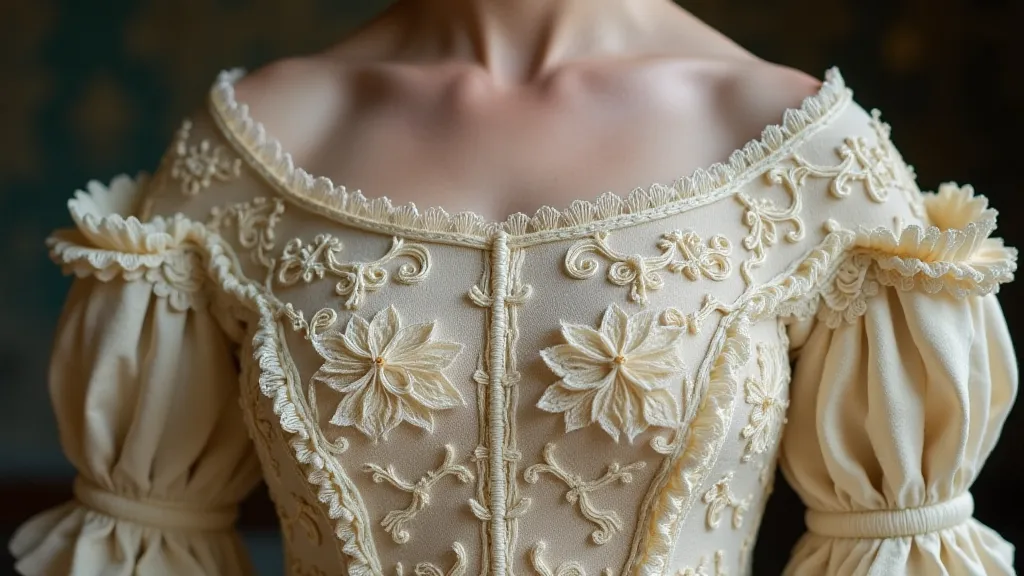
Bobbin Lace in Clothing
Victorian garments showcased bobbin lace in a variety of ways. It was commonly used for:
- Necklines and Collars: Delicate bobbin lace trims were often applied to blouses, dresses, and even mourning attire.
- Sleeves: Both short and long sleeves were frequently embellished with lace, ranging from simple edging to elaborate panels.
- Yokes: The yoke (the upper part of a dress or blouse) was a prime location for showcasing intricate bobbin lace.
- Cuffs: Similar to necklines, cuffs on sleeves were often adorned with bobbin lace.
- Linings: Sometimes bobbin lace was incorporated into the lining of garments, a subtle sign of luxury.
The style of bobbin lace often reflected current fashion trends. Early Victorian lace tended to be more symmetrical and geometric, evolving to include more flowing, floral designs as the era progressed. The versatility of lace allowed for a wide range of applications, and understanding the different types of lace and their construction is key to appreciating their historical significance. Sometimes, decorative elements like faggoting – combining bobbin lace with other textiles to create unique patterns – were employed to add further complexity and visual interest to garments. Those interested in this specific technique can learn more about the art of faggoting.
Beyond its decorative function, lace also played a crucial role in defining social and economic status. The increasing availability of machine-made lace, while initially causing distress among traditional lacemakers, ultimately democratized access to this luxury item, albeit diminishing the prestige associated with handmade creations.
Beyond Clothing: Home Decor and Accessories
Bobbin lace's influence extended beyond clothing. It was used extensively in home decor, gracing:
- Tablecloths and Linens: Intricate lace tablecloths and napkins were hallmarks of a well-appointed Victorian home.
- Curtains and Drapes: Lace curtains softened the light and added elegance to rooms.
- Cushions and Upholstery: Bobbin lace accents could be found on cushions, sofas, and chairs.
Accessories like fans, purses, and even parasols also frequently featured bobbin lace. The delicate and intricate nature of these laceworks required an understanding of the potential for defects and degradation over time. Identifying these imperfections can be critical for both collectors and restorers. Exploring common bobbin lace defects and their identification is covered in Common Bobbin Lace Defects and How to Recognize Them.
Identifying Victorian-Era Bobbin Lace
Recognizing Victorian bobbin lace can be rewarding for collectors and enthusiasts. Here are some things to consider:
- Motifs: While floral motifs became increasingly popular, earlier Victorian lace often featured geometric patterns.
- Ground: The "ground" (the background of the lace) may be more open or tighter depending on the period and the desired aesthetic.
- Color: While most Victorian bobbin lace is white or cream, subtle variations in color can sometimes provide clues about age and origin.
- Construction: Examine the stitch structure closely. Victorian-era lace makers developed refined techniques that can be identified by careful observation.
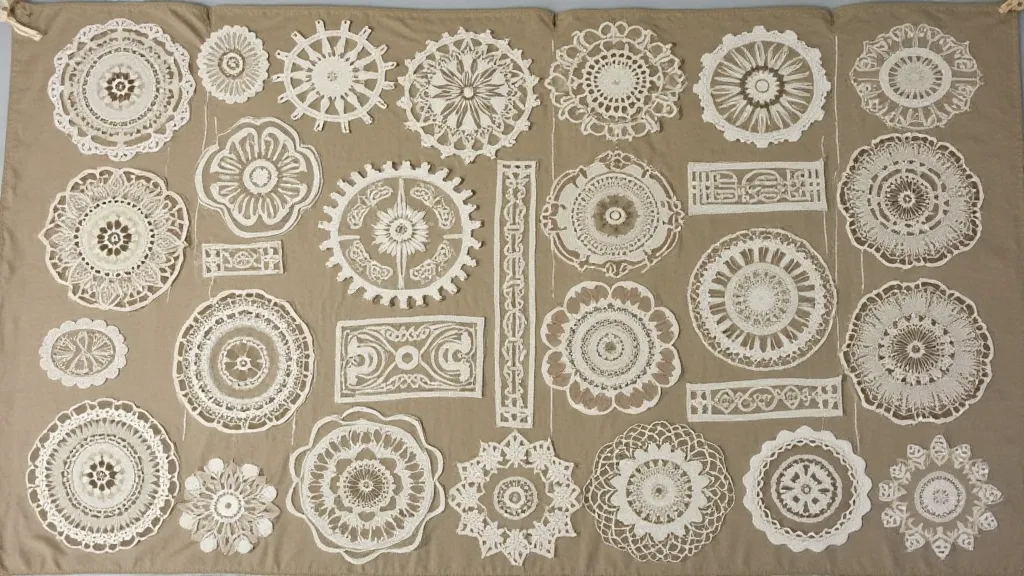
The Evolution of Techniques and Materials
The Victorian era witnessed significant advancements in both lace-making techniques and the materials used. Initially, lace was exclusively handmade, relying solely on the skill and artistry of the lacemaker. However, the advent of mechanized production, while initially met with resistance from traditional artisans, eventually influenced even handmade lace. The process of distinguishing bobbin lace from other forms, like needle lace, can be challenging for the uninitiated, but careful observation of the construction methods reveals key differences. It’s often a matter of understanding how the thread is manipulated and the overall texture produced. While machine-made lace became increasingly common and more affordable, those who desired the distinct quality and beauty of handmade bobbin lace continued to value it highly. Examining the tools themselves reveals a detailed history of these developments. The history and evolution of these tools is a compelling subject in itself, as documented in Bobbin Lace Tools: Evolution and Identification.
The Social and Economic Context
The proliferation of lace during the Victorian period was intrinsically linked to the social and economic landscape of the time. The rise of the middle class created a growing demand for decorative goods, and lace, in its various forms, was a readily available means of expressing status and refinement. The availability of more affordable machine-made lace dramatically altered the landscape of the lace industry, impacting the livelihoods of traditional artisans and influencing consumer choices. The availability of patterns, once closely guarded secrets, also began to spread, allowing more people to experiment with lace-making, although the true mastery of the craft remained a rare and prized skill. The shift towards mass production also sparked debates about authenticity and the value of handcrafted items, a conversation that continues to resonate today.
The Future of Bobbin Lace
The rise of affordable machine-made lace in the later Victorian period gradually diminished the demand for handmade bobbin lace. While it never entirely disappeared, its prominence in fashion and home decor significantly declined. The legacy of Victorian bobbin lace, however, continues to inspire contemporary artisans and designers. New techniques and creative applications are emerging, ensuring that the craft remains relevant in the 21st century. Discovering the innovative ways modern artisans are keeping this traditional craft alive is fascinating and highlights the continued importance of the craft and artistic expression. Contemporary designers are finding inspiration in Victorian patterns and techniques, breathing new life into this timeless art form, which is further examined in The Future of Bobbin Lace: Contemporary Designs and Artisans. The resurgence of interest in traditional crafts, coupled with a growing appreciation for handmade goods, suggests a promising future for bobbin lace.
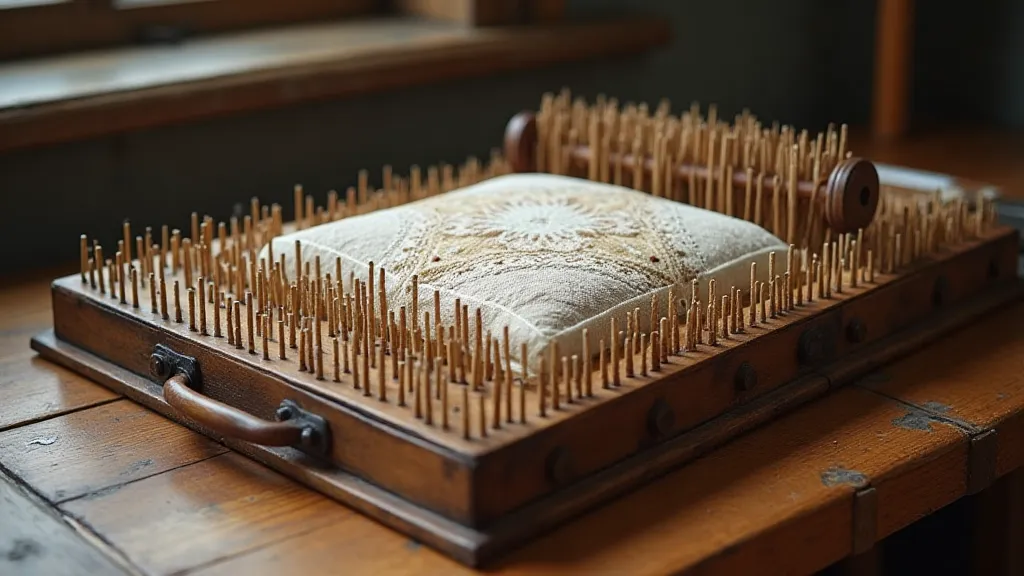
Beyond simply replicating historical designs, modern lacemakers are pushing the boundaries of the craft, experimenting with new materials and incorporating contemporary motifs. The blend of traditional techniques and innovative design creates a unique aesthetic that appeals to a new generation of enthusiasts. The continued preservation and study of historical patterns and techniques ensure that the legacy of Victorian bobbin lace remains vibrant and accessible.
